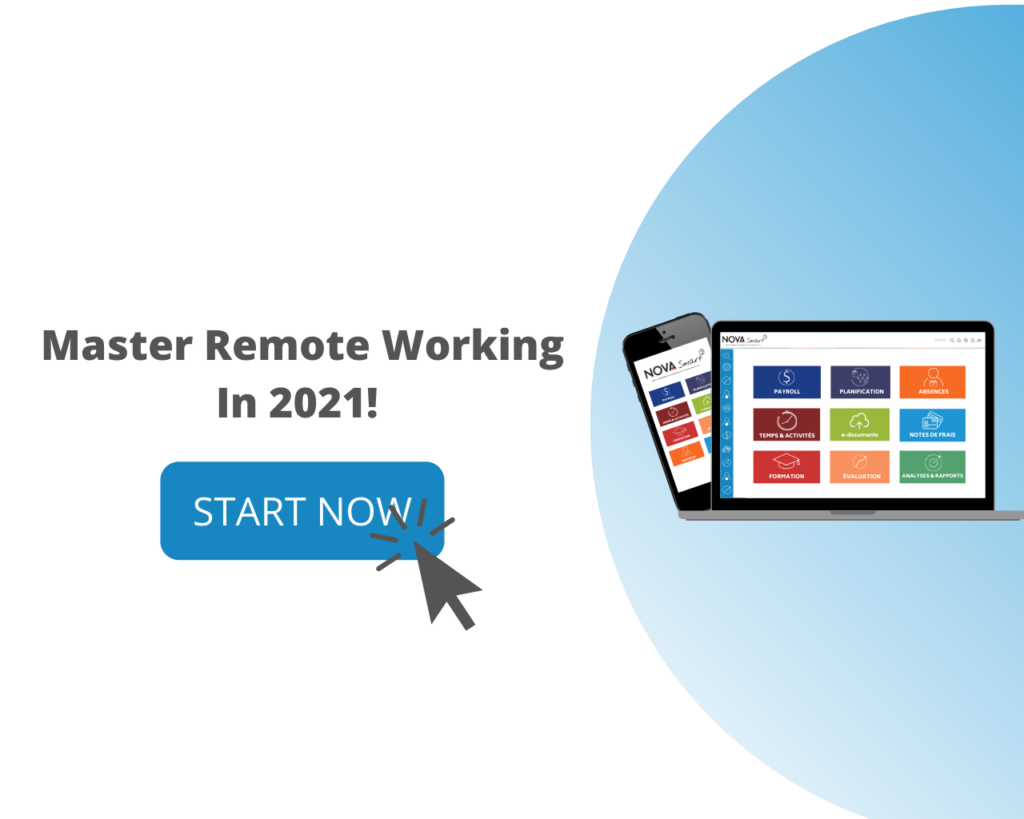Hybrid Work Set Up – are you on top of it? 2020 has brought massive changes to the workforce. It has moved a significant number of employees from working 100% in an office to remote working models. The trends also indicate that few companies want to return to full office work. Businesses have surprisingly found remote work to be more cost-efficient, more productive and leading to more employee satisfaction.
However, many team leaders face challenges in how to set up teams following different working models and how to keep team spirit alive while catering to different needs.
Let’s find out what different work models can be considered within your team and how YOU ensure a smooth set-up.
Different Work Models Explained
Remote Employees
Remote work allows professionals to freely choose where they want to work. They are free to work wherever as long as they can work efficiently and bring the expected results. Some employers however can limit the flexibility within a contractual agreement to put controlling measures in place. That way employers can establish core business hours & meetings. This type of work allows recruiters to hire employees not limited to a specific city or country. It allows hiring qualified employees from a worldwide talent pool.
Co-Located Employees
Co-location is the most traditional way to work: Employees commute to a shared office building to collaborate & work face-to-face with co-workers. Usually, every worker has a designated desk and meeting rooms available. This type of work only allows hiring workers in the closer proximity of the office building.
Hybrid Employees
Hybrid work models are the way of the future as research indicates. These employees usually work a set number of days per week remotely and come into an office for the rest of the time. The challenge with this model is to ensure the needs of the employees for both, remote and co-located.
Set-Up the Workplace for Different Needs
Setting-up a workplace catering to different needs can be tricky but not impossible. Consider the following steps and come closer to a happy & productive work environment. Value the different needs equally & keep team spirit high. You have a hybrid workforce? Consider the tips for remote & co-located workers.
REMOTE WORKERS
Provide the same equipment no matter the location
Just because your employees do not have a desk in one of your offices, does not mean they do not need one at all. To ensure that they have the same chance to be productive and successful as your co-located workers, you must acquire all equipment you usually would. Examples would be a laptop, second screen, office chair and access to specific software.
Set up clear rules & boundaries
Communicate the rules and boundaries for a remote position, including core working hours, work flexibility, meeting availability and company processes. Besides, make sure that the remote employee knows exactly who to contact for what issue. Contacts for IT and HR are a great way to start.
Ensure data security
Within a remote work set-up, you usually do not have much of an overview of how secure your company secrets are. Make sure that your company data security guidelines are applied and put restrictions on working in cafes or such in place if you worry about data security preaches.
Video conferencing tools
Video conferencing and collaboration software (teams, webex, slack, etc.) are a must if you want to have a productive and collaborative team environment. Also, this allows remote workers to easily connect with co-located or other remote workers making working less “lonely“.
1:1 conversations
One-to-one-conversations are a big YES when it comes to remote work. There is little to no chance otherwise to get to know your remote worker, learn about their difficulties, their successes and start building a trusting relationship. Schedule regular meetings, listen and let your employee know that they are important.
Implementation of HR Software
HR Software is the go to for scheduling time off, checking working times and availability. This allows you to simply see when specific workers work and receive an overview of who is available in the office and remotely. Also, remote workers can simply track their time, check their overtime, put annual leave in or simply see who is working to better plan ahead.
CO-LOCATED WORKERS
Utilize your workspace
Co-located workers will utilize the office space differently, hence why you may need to reorganize & restructure it. Fewer workers will be working at a desk regularly, but more workers will come together to have meetings. Create more collaborating space and meeting corners to cater for these new needs.
Easy implementation of video conferencing tools with room booking
Try to implement a solution that allows room booking at the same time as scheduling video conferences. You ask why? In a hybrid working environment there will be many meetings where co-located and remote workers need to take part in a meeting. Not being able to book both in advance will result in co-workers wasting 10 minutes of the meeting time to find a room. Also, not having video conferencing equipment within the meeting room will make dialling in a challenge by itself.
Hybrid Workers = Co-Located + Remote Needs
Clarify rules & expectations
To set up a hybrid work environment, it is almost impossible to make it work, if you do not provide the employee enough information. Let the employee clearly know, when they must be in the office, to what degree they can choose their remote working days and how to communicate. This will diminish any misunderstandings right at the start.
Apply same tips as for remote & co-located workers
Make sure to consider the points mentioned under remote and co-located workers. Hybrid workers have both needs as they do have two workplaces that they alternate.
A hybrid work set-up can be made more efficient with the right tools and technology. If you want to find out more about how an intelligent and simple-to-use HR Software can benefit you and your team’s productivity & efficiency, check out this page.











